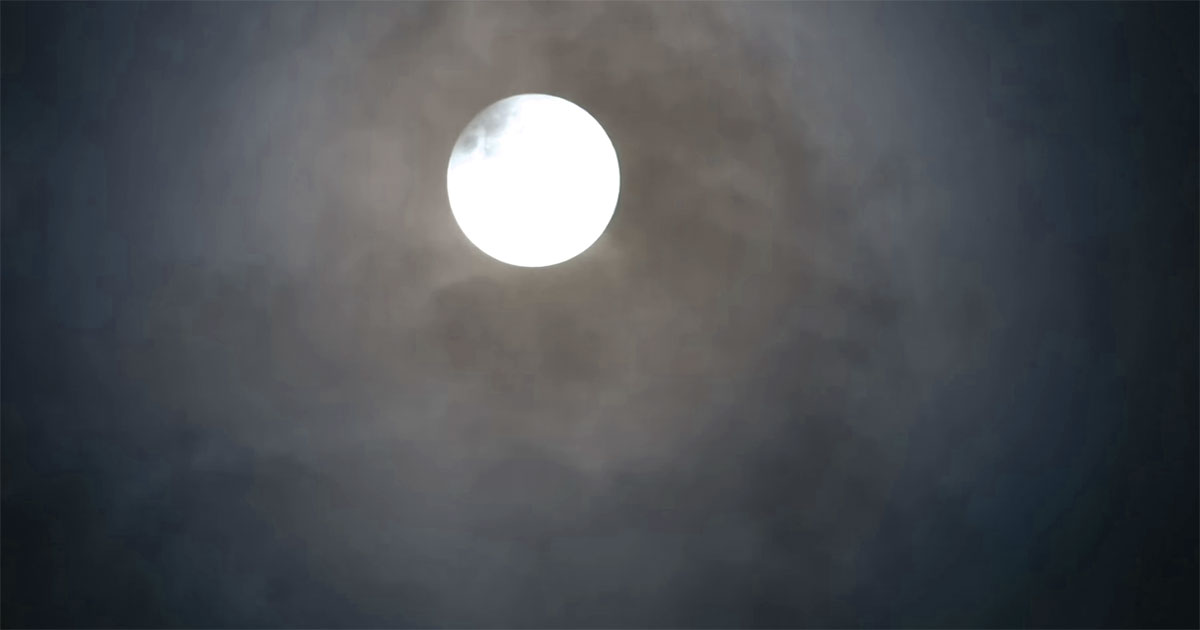Follow us on Telegram for the latest updates: https://t.me/mothershipsg
A day after the belated National Day Parade 2021, people in Singapore have one more thing to look forward to: A blue sturgeon moon on Aug. 22.
Aug. 22 is also the two-week mark of the Hungry Ghost Festival, recognised as the peak of the month-long seventh month event.
What time, and where?
According to Time and Date, the blue moon on Aug. 22 will start rising at 7:15pm.
 Image screenshot from Time and Date website.
Image screenshot from Time and Date website.
However, the full moon will be visible at 8:01pm precisely.
If weather permits, and the skies are clear, you just might be able to catch sight of the blue moon.
Except that that blue moon is not blue in colour.
As the full moon rises, it will appear orange, before turning to a pale yellow on its ascent.
Why is it called a blue moon?
The term blue moon has existed for over 400 years.
It is believed that the term may have originated from when smoke and ashes after a volcanic eruption turned the moon blue.
However, a blue moon could refer to either a seasonal or monthly moon.
And no, neither of these moons are blue.
Seasonal blue moon
According to an earlier definition, a seasonal blue moon occurs when four full moons fall within the time frame of three months.
During such instances, the seasonal blue moon specifically refers to the third full moon in the four full moons sequence.
This happens once every two-and-a-half years.
The origins of its name can be traced back to the Farmer's Almanac, a yearly publication that predicts the weather in the U.S. and Canada, amongst other informational tidbits.
The term was created for the extra 13th full moon, so as to not disrupt the "regularly" scheduled moon cycle that farmers were used to.
Monthly blue moon
On the other hand, the monthly blue moon is a definition from contemporary times when people have shifted away from agriculture practices.
It applies to when a full moon occurs twice in the same calendar month, and specifically refers to the second full moon.
It was believed that the term was coined as a mistake, when the original definition was misinterpreted in 1946 by an amateur astronomer.
Despite this, the term has taken a life of its own, with the second definition of the blue moon in wider circulation.
According to this definition, the occurrence of a monthly blue moon is also more frequent, and it will occur roughly every two to three years.
Why is it called a sturgeon moon?
By this point, you should know that the sturgeon moon will bear no resemblance to the sturgeon fish.
The sturgeon moon, which specifically refers to the full moon that takes place in the month of August, is named because of the fish's abundance in North America's lakes and rivers during August.
The full moon in August also goes by other names, including grain moon, green corn moon, fruit moon, and barley moon, all of which are inspired by the various crops are ripe harvest in August.
Why the wacky names?
A moon cycle typically takes 29.5 days.
This means that the time between one full moon, and the next, is 29.5 days.
In the past, before the advent of technology, humans have had to rely on the moon's movement to keep track of time, and subsequently set schedules for hunting, planting, and harvesting.
Hence, the name of full moons were ingeniously tied to how the plants, animals, or weather were like during that given month.
For example, strawberry moon, which happens in June, marked the harvesting of the strawberry fruits.
Next blue moon
The phrase, "Once in a blue moon", was not coined for nothing, as the next seasonal blue moon will be on Aug. 19, 2024, which is almost three years later.
A double blue moon, where a monthly blue moon, or two full moons, happens in January and February, is more rare.
The next one will happen 16 years later, in 2037.
Other wacky moons:
Top image via
If you like what you read, follow us on Facebook, Instagram, Twitter and Telegram to get the latest updates.

